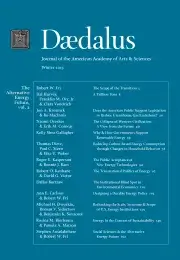A Trillion Tons
There is a consensus among scientists that stark dangers await in a world where the global mean temperature rises by more than about 2 degrees Celsius. That threshold corresponds to a collective human carbon emissions “budget” of around a trillion tons, of which half has been spent. This paper uses a new simulation model to look at strategies to stay within that budget, specifically assessing the impact of improvements in energy efficiency, aggressive deployment of renewables, and energy technology innovation. The simulations examine the timing of investments, turnover of capital stock, and the effect of learning on costs, among other factors. The results indicate that efficiency, renewables, and technology innovation are all required to keep humanity within the trillion-ton budget. Even so, these measures are not by themselves sufficient: changes in land use and a price on carbon emissions are also needed.
How much carbon can humans safely emit into the atmosphere? Climate scientists argue that a 2 degree Celsius (about 4 degree Fahrenheit) increase in global mean temperature is a threshold above which the probability of highly adverse consequences grows significantly. Such an increase would correspond to roughly a trillion tons of total human-caused carbon emissions over time.1 If one trillion tons is humanity’s carbon budget, how much have we used so far? How fast will we emit the remainder under current trends? And what can we do to make sure that we don’t bust the budget?
To consider the relative contributions of different variables, ClimateWorks, a foundation that supports public policies that mitigate climate change, and its partners at Climate Interactive developed the system-dynamics computer model En-ROADS (Energy–Rapid Overview and Decision-Support simulator). En-ROADS is a global model that assesses how changes in energy supply and demand might affect emissions and, in turn, climate outcomes.2 It is designed to rapidly assess the impact of various policy scenarios on cumulative emissions by manipulating variables as diverse as global GDP, energy efficiency, innovation, carbon price, and fuel mix.
. . .
